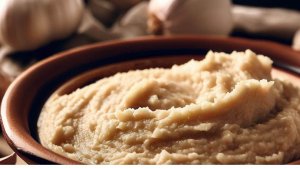What is the best substitute for Garlic Paste?
Are you looking for a garlic paste substitute? If you’re looking for substitutes for garlic paste in your recipes, there are several options you could consider. Try using Fresh Garlic, Garlic Powder, Garlic Salt, Granulated Garlic, Minced Garlic in Oil, Roasted Garlic, Garlic-infused Oil, Onion Salt, Garlic Sauce, or Garlic Sprouts.
Remember to adjust the quantity of the substitute based on your taste preferences and the specific recipe you’re making.
What is Garlic Paste?
Garlic paste is a smooth and finely minced mixture of garlic cloves blended with a little oil, salt. Sometimes other ingredients such as vinegar or lemon juice are also added. It is used as a flavoring agent in various cuisines and can add a strong garlic taste to dishes.
How to use garlic paste:
Use garlic paste in a wide variety of dishes to add some garlic flavor. Here are some common ways to use it:
- Cooking: Add garlic paste to your sautéed vegetables, curries, stews, soups, or stir-fries during the cooking process to infuse the dish with garlic flavor.
- Marinating: Use garlic paste as part of your marinade for meats, poultry, or seafood to add a delicious garlic taste.
- Spreads and dips: Incorporate garlic paste into your spreads and dips, such as hummus, tzatziki, or aioli.
- Seasoning: Mix garlic paste with butter or olive oil and use it as a seasoning for bread, pasta, or roasted vegetables.
- Dressings and sauces: Blend garlic paste into salad dressings, pasta sauces, or vinaigrettes for added flavor.
Remember that garlic paste is quite potent, so it’s essential to use it in moderation. But however much you decide to use, make sure to enjoy the wonderful aroma and taste of garlic in your favorite dishes!
Okay, before we look at your garlic paste substitute options, let’s deal with that empty cupboard situation!
Where can I buy Garlic Paste?
If you want to be more prepared and ensure you don’t run out of garlic paste then you should stock up now.
Nowadays most delicatessens and general supermarkets stock a wide variety of garlic paste.
Or if you prefer you can also purchase garlic paste on-line.
So why not jump on and place your order today.
STOCK UP NOW!
Premium Garlic Paste by TAJ Gourmet Foods.
Add to your dishes to create tasty meals. Suitable for vegetarian diets. GMO free.
No artificial colors, flavors or preservatives in this long-lasting resealable jar. Keep refrigerated after opening.
What can I substitute for Garlic Paste?
Here are some of the best ingredients to substitute the flavor and role that garlic paste provides in your recipes.
- Fresh Garlic
- Garlic Powder
- Garlic Salt
- Granulated Garlic
- Minced Garlic in Oil
- Roasted Garlic
- Garlic-infused Oil
- Onion Salt
- Garlic Sauce
- Garlic Sprouts
Garlic Paste substitutes
Fresh Garlic
Fresh garlic refers to the raw, unprocessed garlic bulb which is wrapped in a papery skin. Once you break the bulb open you will find multiple individual cloves. It is the most common and widely used form of garlic in cooking. Crush, mince, or blend fresh garlic to form a garlic paste. This is often used to add a pungent, aromatic flavor to a variety of dishes. However you can easily use fresh garlic as a substitute for garlic paste.
To use fresh garlic as a substitute for garlic paste, follow these steps:
- Peel and crush/mince: Separate the individual cloves from the garlic bulb and peel off the papery skin. Crush the garlic cloves with a garlic press or finely mince them with a knife.
- Make a paste: If you want a paste-like consistency similar to garlic paste, you can use a mortar and pestle to crush the minced garlic into a smooth paste. Alternatively, you can use the flat side of a knife and some salt to create a paste by mashing the garlic against a cutting board.
- Adjust quantities: As a general guideline, you can use approximately 1/2 to 1 teaspoon of crushed or minced fresh garlic for every 1 teaspoon of garlic paste called for in the recipe. Start with a smaller amount and adjust to your taste preference.
- Cooking time: Fresh garlic has a more intense flavor than garlic paste, so you might want to add it towards the beginning of cooking to allow the flavors to develop. However, if you prefer a milder garlic taste, you can add it later in the cooking process.
- Other considerations: Keep in mind that fresh garlic has a different texture and intensity than garlic paste. Therefore, it may slightly alter the consistency of your dish. Also, fresh garlic may require a bit of extra care when incorporating it into your recipes. Try not to burn or overcook, as raw garlic can become bitter if exposed to high heat for too long.
Fresh garlic is incredibly versatile – use in a wide range of dishes, including stir-fries, pasta sauces, soups, marinades, dressings, and more. It offers a more authentic garlic flavor than most substitutes. It is an excellent choice if you have fresh garlic on hand.
Since fresh garlic and garlic paste have distinct textures,be prepared for a slightly different mouthfeel when using fresh garlic. However, its robust flavor and flexibility make fresh garlic an ideal substitute in most recipes calling for garlic paste.
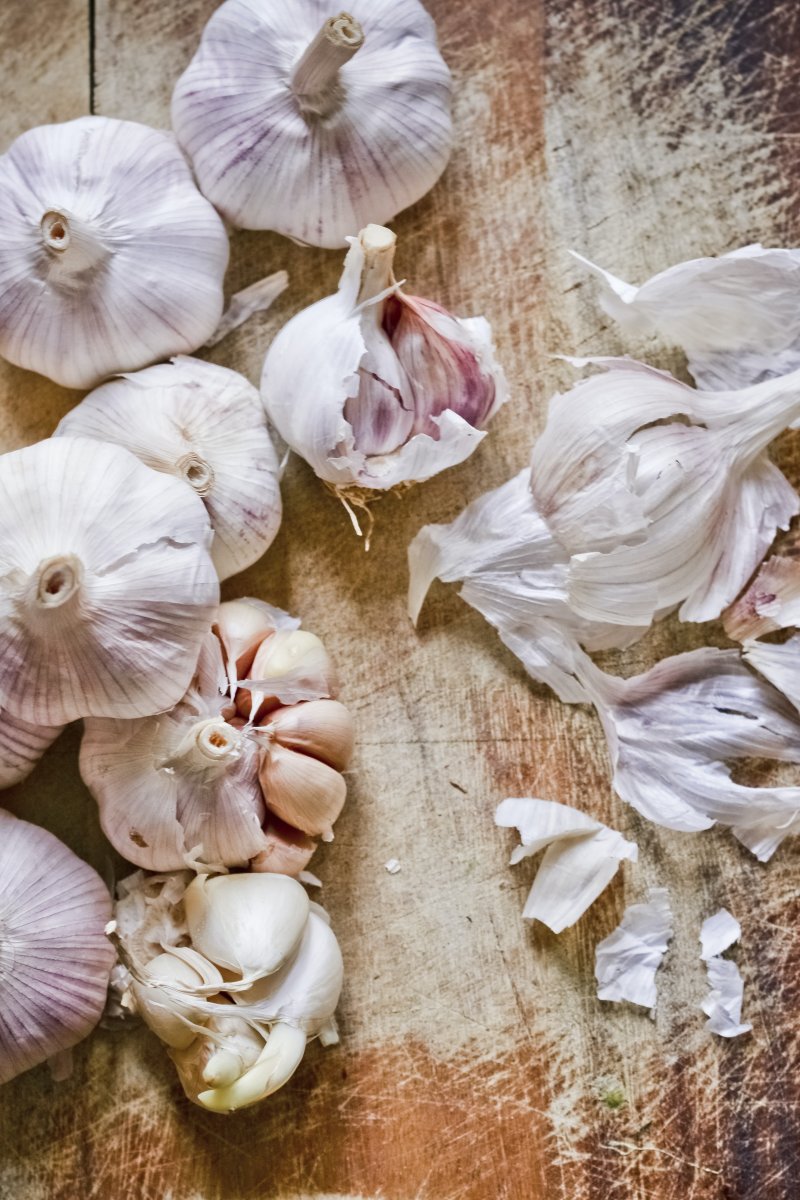
Garlic Powder
Garlic powder is a dehydrated and finely ground form of garlic. It is made by drying garlic cloves and then grinding them into a powder. Garlic powder is a popular pantry staple as it provides a convenient way to add garlic flavor to dishes without the need for fresh garlic.
When using garlic powder as a substitute for garlic paste, here are some considerations:
- Flavor: Garlic powder has a concentrated garlic flavor. However, it lacks the freshness and pungency of fresh garlic or garlic paste. Therefore, the flavor is milder and can be slightly sweeter compared to garlic paste.
- Substitution Ratio: As a rough substitution guide, you can use about 1/2 to 3/4 teaspoon of garlic powder for every 1 teaspoon of garlic paste called for in the recipe. Remember to start with a smaller amount and then you can adjust to your taste preference.
- Texture: Garlic powder is a dry, fine powder, so it won’t provide the same paste-like consistency as garlic paste. If the texture is crucial to the recipe, consider mixing the garlic powder with a small amount of water or oil to form a paste.
- Cooking Time: Since garlic powder is a dried form, it doesn’t require cooking as long as fresh garlic or garlic paste. You can add it directly to the recipe during cooking or seasoning stages.
- Adjusting Other Ingredients: Since garlic powder doesn’t have the moisture content of garlic paste, you may need to adjust other liquids in the recipe to maintain the right balance.
Garlic powder is a versatile seasoning that can be used in various dishes. It works well in spice rubs, marinades, soups, stews, sauces, dressings, and as a seasoning for roasted vegetables or meats. Sprinkle directly onto food for added flavor.
While garlic powder can add a garlicky taste to your dishes, it may not fully replicate the nuances of garlic paste. If possible, consider using other substitutes like minced garlic in oil, roasted garlic, or garlic-infused oil. These will give you a similar flavor and consistency to garlic paste.
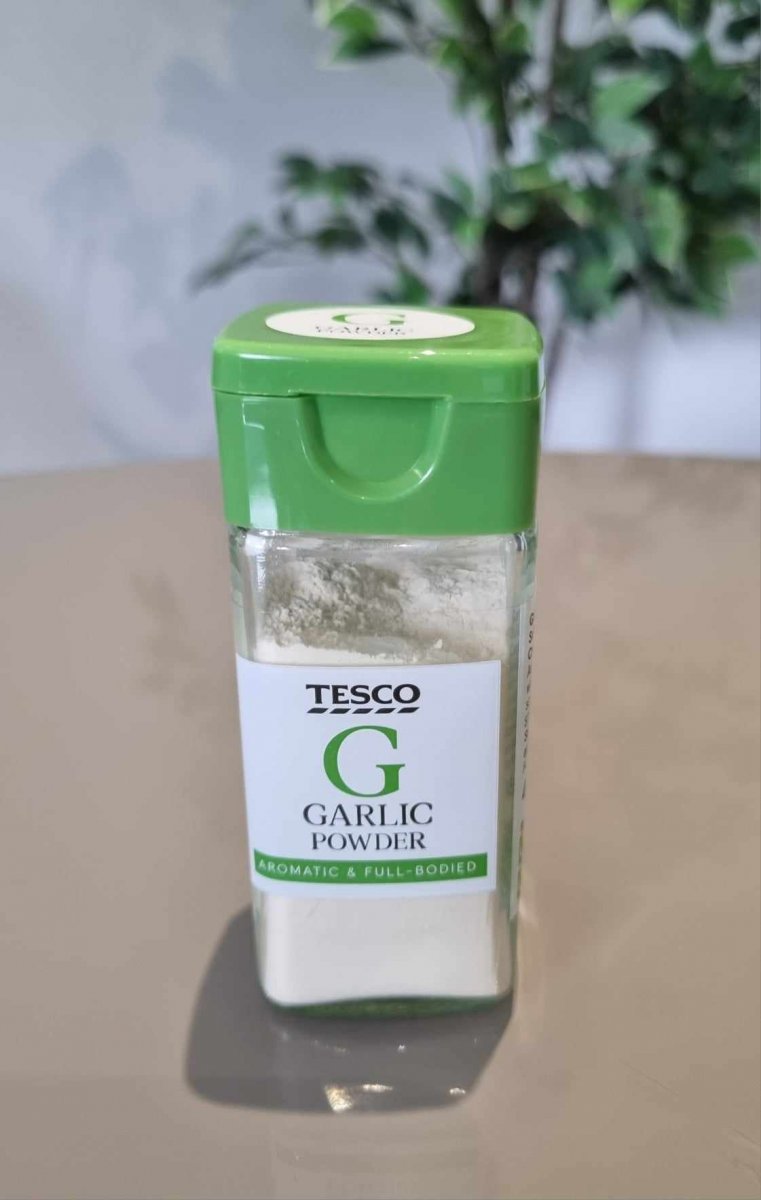
Garlic Salt
Garlic salt is a seasoning blend that combines granulated garlic with table salt. It is a convenient way to add both garlic flavor and saltiness to dishes without the need to measure and use separate garlic and salt. Garlic salt is widely available in grocery stores and is a popular seasoning for various recipes.
When using garlic salt as a substitute for garlic paste, here are some important points to consider:
- Saltiness: Garlic salt contains salt, so it will add saltiness to your dish along with garlic flavor. Keep this in mind when using it as a substitute for garlic paste, as it may affect the overall salt content of the recipe.
- Flavor: Garlic salt has a stronger garlic flavor compared to regular table salt. However, it may not have the same depth of flavor as garlic paste. The garlic taste in garlic salt can vary depending on the brand and the ratio of garlic to salt used.
- Substitution Ratio: When substituting garlic salt for garlic paste, you will need to adjust the quantities. As a general guideline, use about 1/2 to 1 teaspoon of garlic salt for every 1 teaspoon of garlic paste. Remember to reduce or eliminate additional salt in the recipe to account for the salt in the garlic salt.
- Adjusting Other Ingredients: Since garlic salt contains salt, you may need to adjust other ingredients in the recipe. For instance, if the recipe calls for additional salt, you might want to reduce or omit it altogether.
- Texture: Garlic salt is a dry seasoning, so it won’t provide the same paste-like consistency as garlic paste. If the texture is essential to the recipe, consider using other substitutes like minced garlic in oil or garlic-infused oil.
As for usage, sprinkle garlic salt directly onto food as a seasoning, similar to regular salt. It works well as a general garlic and salt seasoning for meat, vegetables, roasted potatoes, and other savory dishes.Use in marinades, rubs, sauces, and dressings.
When using garlic salt as a substitute, it’s essential to taste and adjust the seasoning as you go. While garlic salt can add a garlicky kick to your dishes, it may not be a perfect replacement for the nuanced flavors of garlic paste. If possible, consider using fresh garlic or other substitutes like roasted garlic or minced garlic in oil for a more accurate representation of the original garlic paste flavor.
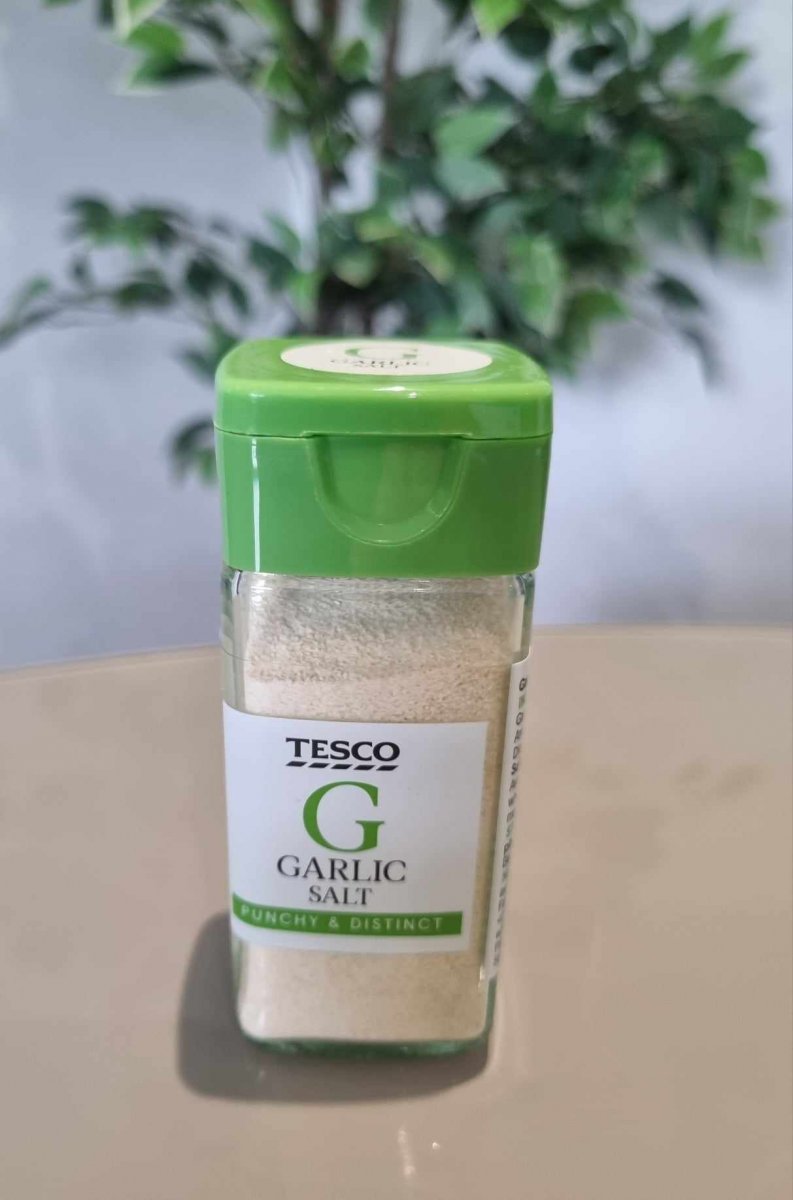
Granulated Garlic
Granulated garlic is a dried and ground form of garlic that has a coarse texture similar to fine grains or small crystals. It is made by dehydrating garlic cloves and then grinding them into granules. This process helps preserve the garlic’s flavor and aroma while extending its shelf life.
To use granulated garlic as a substitute for garlic paste, consider the following:
- Flavor: Granulated garlic has a more concentrated flavor than fresh garlic and a slightly different taste compared to garlic paste. It lacks the pungency of fresh garlic and can have a milder, sweeter flavor.
- Substitution Ratio: As a rough substitution guide, you can use about 1/2 to 1 teaspoon of granulated garlic for every 1 teaspoon of garlic paste called for in the recipe. Start with a smaller amount and adjust to your taste preference.
- Texture: Granulated garlic has a dry and grainy texture, so it won’t provide the same consistency as garlic paste. If the paste-like texture is crucial to the recipe, you can try mixing the granulated garlic with a small amount of water or oil to form a paste.
- Cooking Time: Granulated garlic is a dried form, so it doesn’t need to be cooked as long as fresh garlic or garlic paste. You can add it directly to the recipe during cooking or seasoning stages.
- Adjust Other Ingredients: Since granulated garlic doesn’t have the moisture content of garlic paste, you may need to adjust other liquids in the recipe to maintain the right balance.
Granulated garlic is a versatile seasoning that can be used in many dishes. It’s excellent for seasoning meat, poultry, and seafood, as well as adding flavor to soups, stews, sauces, dressings, and marinades. Sprinkle on vegetables, roasted potatoes, or popcorn for a tasty garlic kick.
One advantage of using granulated garlic as a substitute is its long shelf life. This makes it a convenient pantry staple for adding garlic flavor to your cooking without worrying about spoilage.
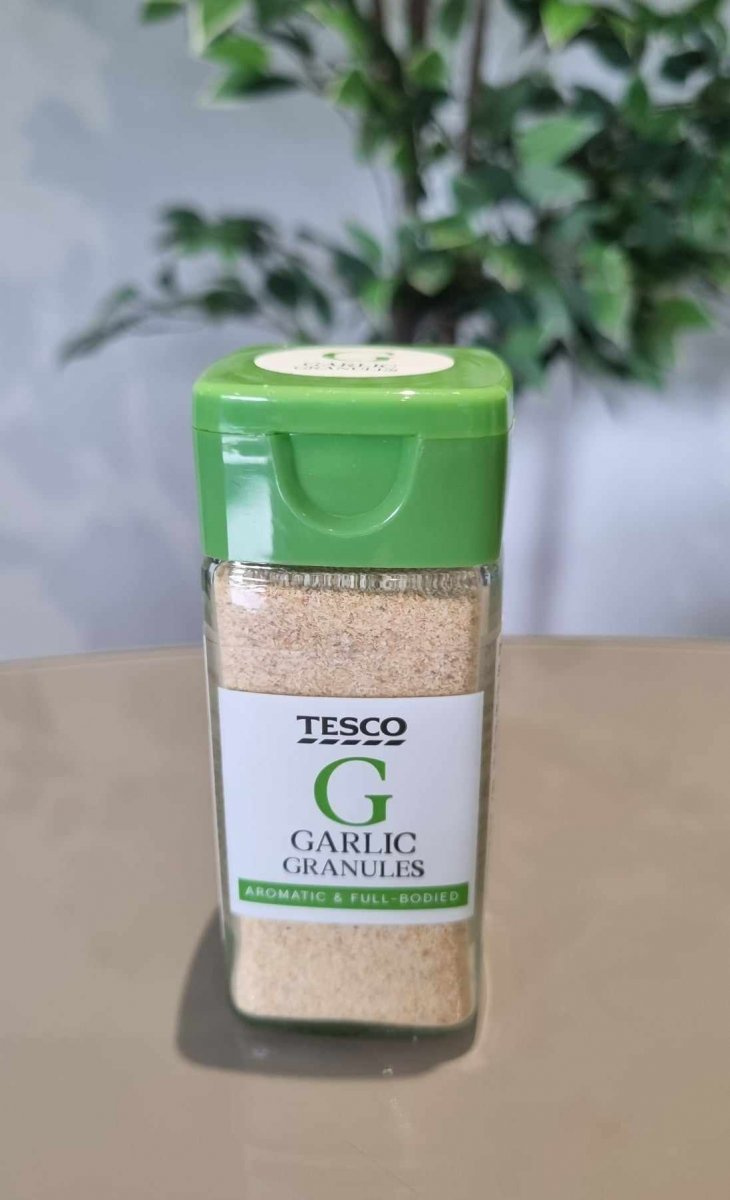
Minced Garlic in Oil
Minced garlic in oil is a handy product where garlic cloves have been minced or finely chopped and then preserved in oil. The oil helps preserve the garlic and keeps it from spoiling while infusing it with garlic flavor. It is commonly available in jars or bottles at most grocery stores. It is a popular ingredient for quick and easy cooking.
To use minced garlic in oil as a substitute for garlic paste, consider the following:
- Flavor: Minced garlic in oil will have a similar garlic flavor to garlic paste. However, it might be slightly milder due to the presence of oil. The oil can also add a subtle richness to the garlic taste.
- Substitution Ratio: As a general guideline, you can use an equal amount of minced garlic in oil as the amount of garlic paste called for in the recipe. For example, if the recipe requires 1 teaspoon of garlic paste, use 1 teaspoon of minced garlic in oil.
- Adjust Other Ingredients: Since minced garlic in oil already contains oil, you might want to reduce the amount of additional oil or adjust other liquids in the recipe accordingly.
- Cooking Time: Minced garlic in oil is already pre-cooked and softened. Therefore, you won’t need to cook it as long as you would with garlic paste. Add towards the end of cooking or used as a flavor enhancer for cooked dishes.
- Texture: Minced garlic in oil will have a more textured consistency compared to the smooth paste-like texture of garlic paste.
Minced garlic in oil is incredibly versatile and can be used in various recipes. You can use it in sautés, stir-fries, pasta sauces, dressings, marinades, and more. It’s especially handy when you need to add garlic flavor to your dishes quickly without the fuss of peeling or chopping fresh garlic cloves.
Keep in mind that minced garlic in oil should be stored according to the manufacturer’s instructions. It is also essential to check the expiration date on the packaging. If you don’t have minced garlic in oil on hand, you can also create your own. This is simply done by finely mincing fresh garlic and mixing it with olive oil or other neutral oils. Store homemade garlic in oil in the refrigerator and use it within a few days.
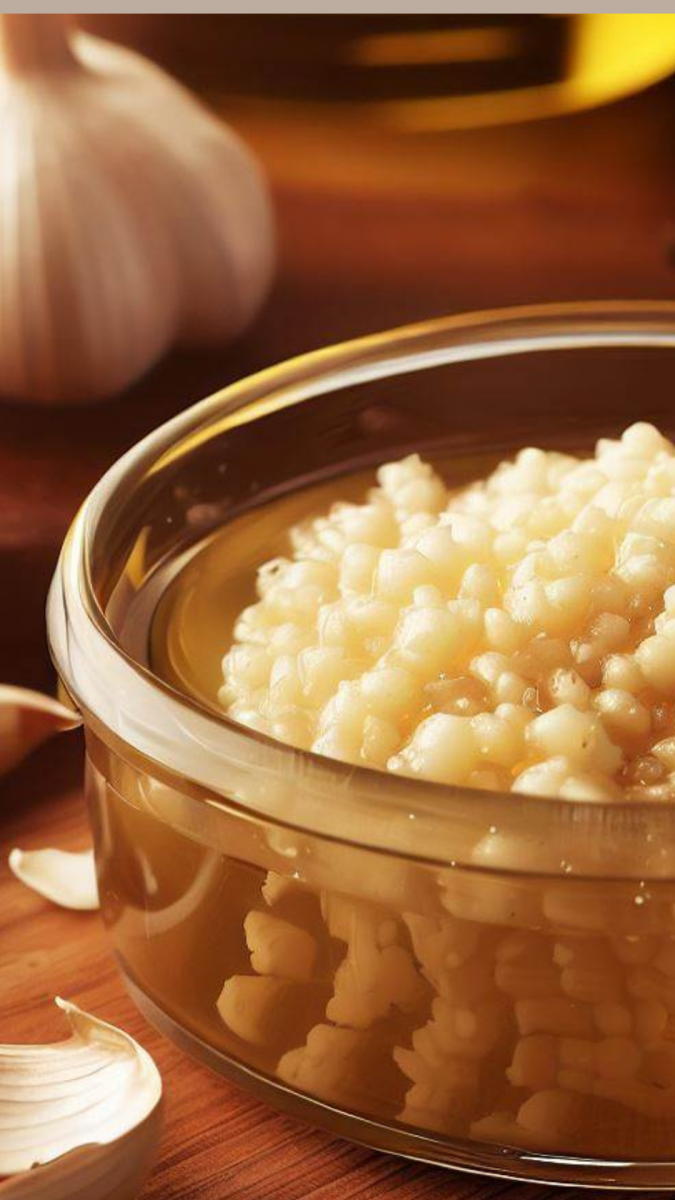
Roasted Garlic
Roasted garlic is a delicious and mellow version of garlic that is obtained by slow-cooking whole garlic bulbs until they become soft and caramelized. The roasting process brings out the natural sweetness of garlic and transforms its pungent flavor into a rich and nutty taste. Roasted garlic cloves become soft, spreadable, and have a creamy texture.
To use roasted garlic as a substitute for garlic paste, follow these steps:
- Roasting Garlic: Preheat your oven to 400°F (200°C). Cut the top portion of the garlic bulb to expose the cloves, drizzle with olive oil, and wrap it in aluminum foil. Place the wrapped garlic bulb on a baking sheet and roast in the preheated oven for about 30-40 minutes or until the cloves are soft and golden-brown. Let it cool slightly before handling.
- Extracting Roasted Garlic: Once the garlic is roasted and slightly cooled, gently squeeze the base of each clove, and the softened roasted garlic will easily slide out of the skin. You can also use a small knife to scoop the cloves out.
- Substitution Ratio: The flavor of roasted garlic is more delicate than garlic paste. As a rough substitution guideline, use about 1.5 to 2 times the amount of roasted garlic compared to the amount of garlic paste called for in the recipe. For example, if the recipe requires 1 teaspoon of garlic paste, use 1.5 to 2 teaspoons of roasted garlic.
- Adjust Other Ingredients: Keep in mind that roasted garlic will add a sweeter and nuttier taste to your dish compared to garlic paste. You might want to adjust other ingredients in the recipe to complement the flavor of roasted garlic.
- Texture Differences: Roasted garlic is softer and creamier than garlic paste, which has a paste-like consistency. If the texture of garlic paste is essential to the recipe, consider blending the roasted garlic cloves with a small amount of olive oil or water.
Roasted garlic is a fantastic addition to various dishes. You can use it in mashed potatoes, pasta sauces, salad dressings, marinades, spreads for bread, and as a flavor booster in soups and stews. Its sweet and mild flavor is very versatile and can enhance the taste of both vegetarian and meat-based dishes.
Make in batches and store in the refrigerator for a few days. You can even freeze it to extend the storage time. This makes it a quick and convenient flavorful substitute for garlic paste.
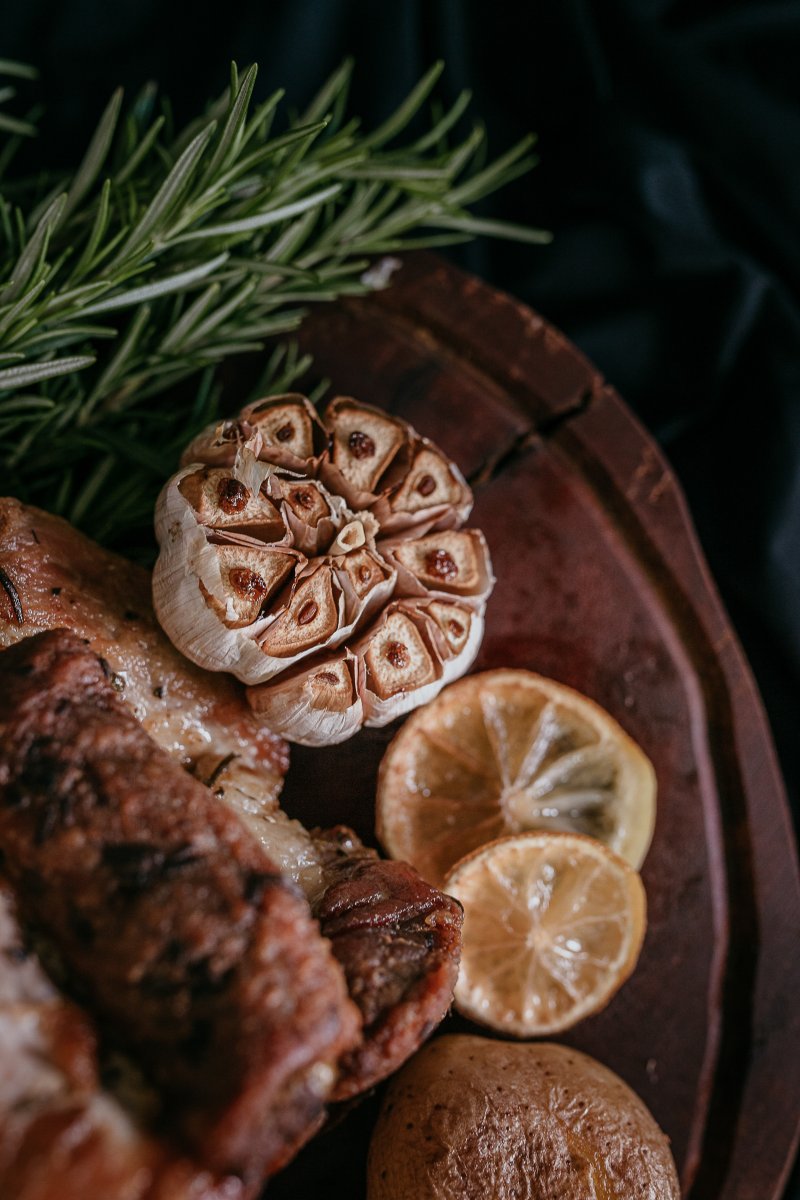
Garlic-infused oil
Garlic-infused oil is a flavorful oil that has been infused with the essence of garlic. It is typically made by heating oil and adding garlic cloves to infuse the oil with garlic flavor. The oil is then strained, leaving behind the garlic-infused oil with a rich, aromatic garlic taste.
When using garlic-infused oil as a substitute for garlic paste, there are a few things to consider:
- Flavor: Garlic-infused oil will provide a milder garlic flavor compared to garlic paste, as the infusion process mellows out the intensity of the garlic. The flavor will be more subtle and aromatic.
- Consistency: Garlic paste has a thick and pasty texture, while garlic-infused oil is a liquid. The consistency difference can impact the final texture of your dish. If the thickness is important for the recipe, you might need to adjust accordingly.
- Adjusting quantities: When substituting garlic-infused oil for garlic paste, the general rule of thumb is to use approximately three times as much garlic-infused oil as garlic paste. For example, if the recipe calls for 1 teaspoon of garlic paste, you can use 3 teaspoons of garlic-infused oil.
- Cooking time: Since garlic-infused oil is already infused with garlic flavor, it doesn’t require the same amount of cooking time as garlic paste. You can add it towards the end of cooking to preserve the aromatic garlic taste.
- Other ingredients: Consider other ingredients in the dish and how they will interact with the garlic-infused oil. When using the oil in a marinade or sauce, the flavors may blend nicely.
It’s important to note that garlic-infused oil should be handled and stored properly to prevent the risk of botulism, a rare but serious foodborne illness. If you’re making your own garlic-infused oil, follow safe procedures, and store it in the refrigerator for no more than a week. Alternatively, you can purchase commercially prepared garlic-infused oils. These are typically safe to use as they undergo proper processing and preservation methods. Always check the label and ensure it’s from a trusted source.
Overall, using garlic-infused oil as a substitute for garlic paste can work well in many recipes, especially those where a more subtle garlic flavor is desired.
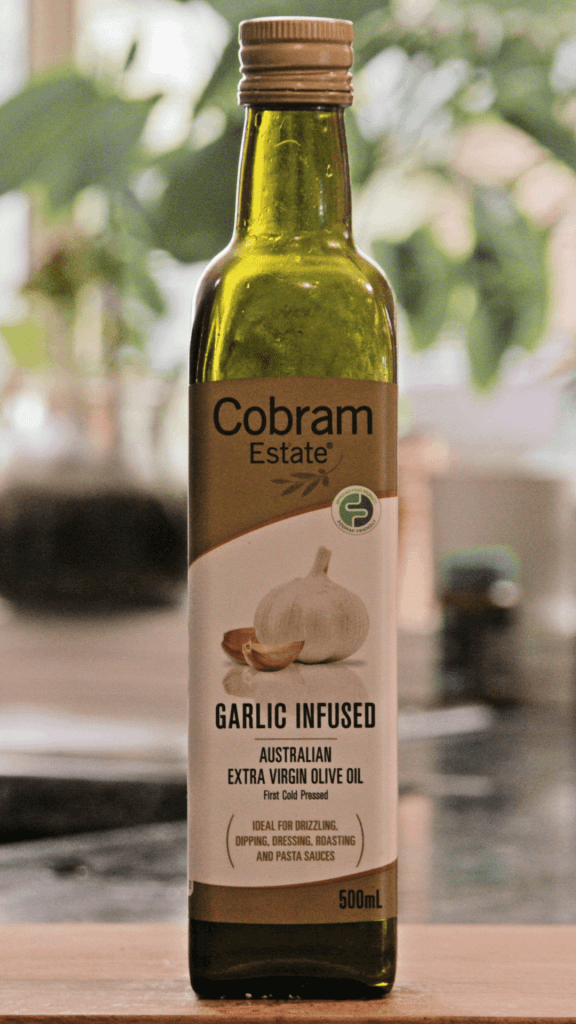
Onion Salt
Onion salt is a seasoning blend made from a mixture of dried, ground onions and salt. It is a convenient way to add both onion flavor and saltiness to dishes without the need to chop fresh onions. Onion salt is commonly found in grocery stores or online. It is widely used in various cuisines to enhance the taste of savory dishes.
To use onion salt as a substitute for garlic paste, you should consider the following:
- Flavor profile: While both garlic and onion belong to the same family (Allium), they have distinct flavors. Garlic has a pungent and slightly sweet taste, while onions have a milder, sweeter flavor. If you use onion salt as a substitute for garlic paste, your dish will have a more pronounced onion taste instead of the garlicky flavor.
- Proportions: Onion salt is a blend of onion powder and salt, so you’ll need to adjust the quantities accordingly. If a recipe calls for a certain amount of garlic paste, try using about half the amount of onion salt and adjust to taste.
- Additional salt: Since onion salt contains both onion powder and salt, you may need to reduce the amount of additional salt called for in the recipe. Take into account the saltiness of the onion salt when adjusting the overall salt content of the dish.
- Consider other ingredients: Garlic paste is often used as a flavor base in many dishes, so if you’re substituting with onion salt, you might want to consider other ingredients to complement the onion flavor. For instance, you could add some garlic powder or minced fresh garlic to the dish to balance the flavors.
While onion salt can work as a substitute for garlic paste in some recipes, keep in mind that it will impart a different flavor profile to the dish. It’s always a good idea to taste and adjust the seasoning as you go to ensure the final result meets your taste preferences. Additionally, if you have the option, fresh garlic or garlic powder might provide a closer match to the original garlic paste flavor.
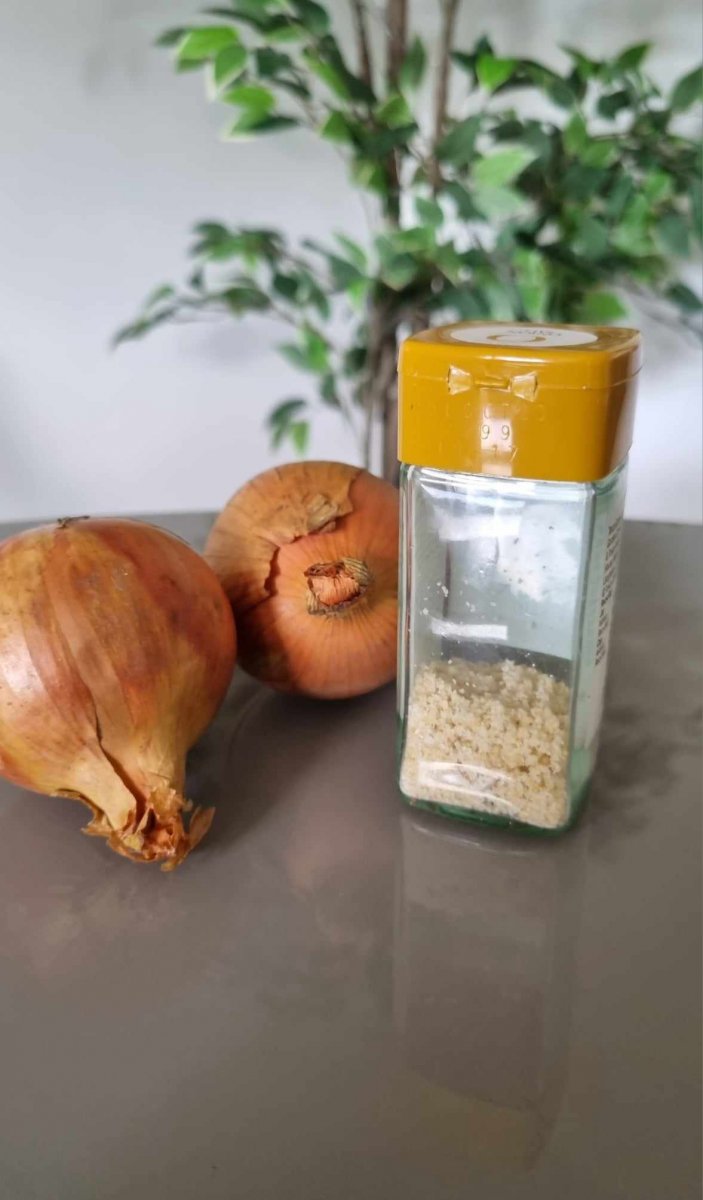
Garlic sauce
Garlic sauce is a condiment or dressing made from garlic, oil, and other ingredients. It can vary in consistency and flavor depending on the recipe. Here are a few common types of garlic sauce:
- Aioli: A traditional Mediterranean garlic sauce made by emulsifying garlic, olive oil, and egg yolks. It has a creamy texture and a rich garlic flavor.
- Toum: A Lebanese garlic sauce made by blending garlic with oil, lemon juice, and sometimes egg whites. It is fluffy, creamy, and has a strong garlic taste.
- Garlic Dipping Sauce: A simple sauce made with minced or crushed garlic, oil, and sometimes additional herbs or spices. Use as a dipping sauce for bread, vegetables, or grilled meats.
- Garlic Mayonnaise: A mixture of garlic and mayonnaise, which results in a creamy and tangy sauce with a prominent garlic flavor.
Using garlic sauce as a substitute will depend on the specific recipe and the consistency of the sauce. If the recipe calls for a small amount of garlic paste, you can usually replace it with an equal amount of garlic sauce. However, keep in mind that garlic sauce might include other ingredients like oil or lemon juice. This could impact the overall flavor and consistency of the dish.
If you are making a dish where the texture of garlic paste is crucial (e.g., marinades or spice rubs), it’s best to stick with garlic paste for a more accurate result. On the other hand, if you are making a recipe where a sauce or dressing consistency is acceptable, using garlic sauce can add some interesting flavors to your dish. Just remember to adjust the quantities of other ingredients, as the sauce may already contain oil or other liquids.
Experimenting with garlic sauce as a substitute can be fun and creative, but always taste and adjust the seasoning as you go to achieve the desired flavor profile in your dish.
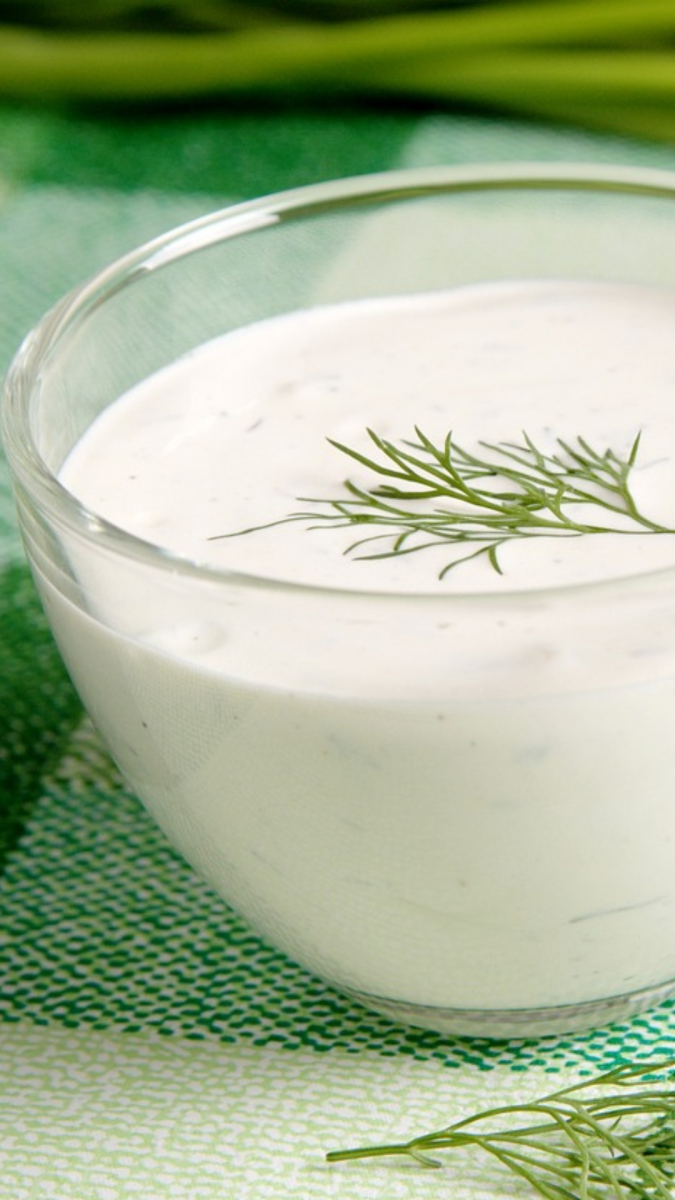
Garlic sprouts
Garlic sprouts, also known as garlic scapes, are the tender, curly green shoots that emerge from the tops of hardneck garlic plants. They typically appear in late spring or early summer and are the flower stalks of the garlic plant. Garlic farmers actually remove these shoots to direct more energy into bulb growth. This results in larger, more mature garlic bulbs.
Garlic sprouts have a milder flavor compared to the garlic bulbs and are often used as a culinary ingredient in various dishes. They have a fresh, vibrant taste, and their texture is similar to green beans or asparagus. Some people describe their flavor as a blend of garlic and mild onion.
Cooking with garlic sprouts can add a unique twist to your recipes. Use in stir-fries, salads, soups, omelets, pesto, and other dishes. When preparing garlic sprouts, it’s common to trim the tougher parts near the base and use the tender shoots in your cooking.
Keep in mind that garlic scapes have a limited availability, as they are only present during a short period in the year. If you come across them at a farmer’s market or grocery store, it’s worth trying them out to experience their delightful taste and versatility in the kitchen.
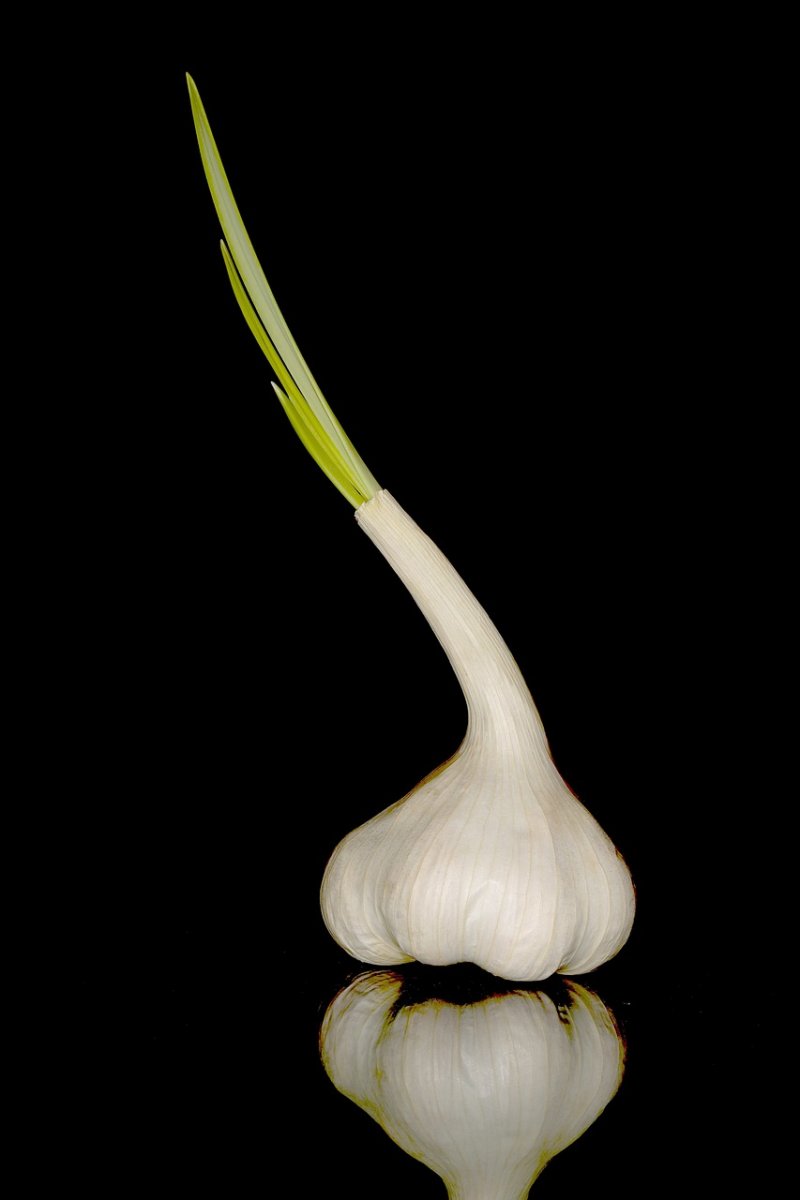
How to make your own Garlic Paste
We thought it might be fun to try and make some homemade garlic paste. Just follow these simple steps to create some delicious and tasty garlic paste – go on, give it a go.
Ingredients:
- Fresh garlic cloves (white or black garlic)
- Olive oil (or any neutral oil)
- A pinch of salt
Instructions:
- Peel the garlic cloves and remove any green sprouts if present.
- Place the peeled garlic cloves in a mortar and pestle or a food processor.
- Add a small amount of oil to help the blending process. Start with a tablespoon and add more if needed.
- Sprinkle a pinch of salt over the garlic cloves.
- Crush the garlic cloves and mix them thoroughly using the mortar and pestle or blend them in the food processor until you get a smooth paste-like consistency.
Store the garlic paste in an airtight container in the refrigerator. It should stay fresh for several weeks.
Summary for Garlic Paste substitutes
Okay – that’s you all sorted with suitable substitutes for garlic paste.
In conclusion, garlic paste, garlic-infused oil, minced garlic in oil, roasted garlic, granulated garlic, and garlic salt are various options you can use as substitutes for each other, depending on the specific recipe and your taste preferences.
Ultimately, the best substitute for garlic paste depends on the specific recipe and the flavor and texture you want to achieve. Each substitute brings its unique qualities, so don’t hesitate to experiment and adjust the quantities and other ingredients to tailor the dish to your taste preferences. Whether using fresh garlic, garlic-infused oil, roasted garlic, or any other substitute, you can add a delightful garlic flavor to your culinary creations.
We have gathered together a lot more facts on ingredients such as herbs, spices, oils, nuts, etc. if you would like to learn some more.
